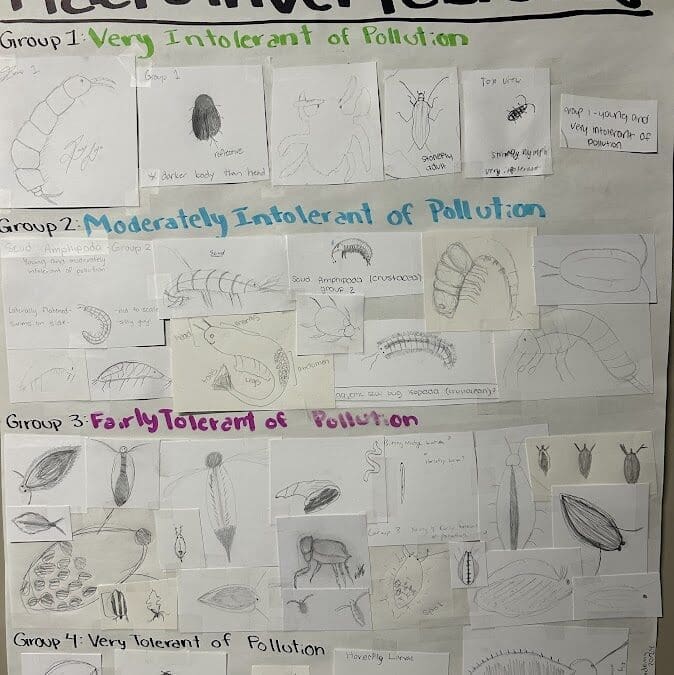In my experience as an environmental educator, macroinvertebrate is a term mostly used for aquatic animals that are small enough that you may have to squint or use a magnifying glass to look closely, but that you don’t need a microscope to see. These critters, sometimes called “macros,” are incredibly important in aquatic systems. They help to “clean up” the water by breaking down detritus (like leaves), provide food for birds and fish and small mammals, and can even act as a biological indicator of water quality!
A shameful secret of mine is that I am very creeped out by bugs. It is a fear I have been actively working to combat with remarkable success I might add; for a brief summer I seriously contemplated getting an advanced degree in entomology. I have since found that in the creepiness scale, perceived cuteness plays a crucial role; for example, caterpillars and moths are far lower on the scale than centipedes and earwigs. This crusade to quash my bug fear was one of the factors that found me leading a macroinvertebrate observation lab with the 10th graders of Tahoma School district’s Outdoor Academy.
Students were tasked with collecting a cup of pond water from the communal bucket, isolating an individual macroinvertebrate in a petri dish using a pipette, and sketching a zoomed in likeness of their macro. They were instructed to be as detailed as possible in their drawings because this is an incredible tool in helping your eyes to focus and notice the intricacies we often tune out for the sake of simplicity. The response to these tasks was mixed, as you might imagine, some students refused to dip their paper cups into the bucket of pond water (I bravely offered to collect it for them), there were many frustrated sounds attempting to isolate speedy critters (these macros have a variety of highly effective techniques for rapid locomotion), and of course a few muffled shrieks (which I found valid, some of these critters look pretty freaky). However, after a few minutes, the students got down to business which resulted in so many awesome sketches!
It was clear to me that scuds were the stars of the show; after all who doesn’t love a shrimp-like organism! Scuds are group 2 organisms meaning they can only tolerate a small amount of pollution, finding them suggests a relatively high water quality!
After their sketch masterpieces were complete, we used them identify each macro with the aid of a dichotomous key: a tool that asks questions like “does the animal have a shell,” or “are there visible wings” to narrow down the species of a given critter. At the beginning of class, we had talked about how macros are used to indicate the health of a water body. Scientists have determined that different invertebrates have different requirements for how un-polluted the water needs to be for them to survive. These requirements have been separated into 4 groups (See the helpful chart created by these students above). Waterbodies that host an even variety of macros in each group are healthy and unpolluted, but waterbodies that host only group 4 or 3 individuals are likely experiencing some level of contamination. Students used this information and their observations of existing macros to decide that the wetland in the uplands of Shadow Lake Nature Preserve was mostly uncontaminated. How cool that we were able to farm out our macroinvertebrate observational data collection to high schoolers?



Recent Comments